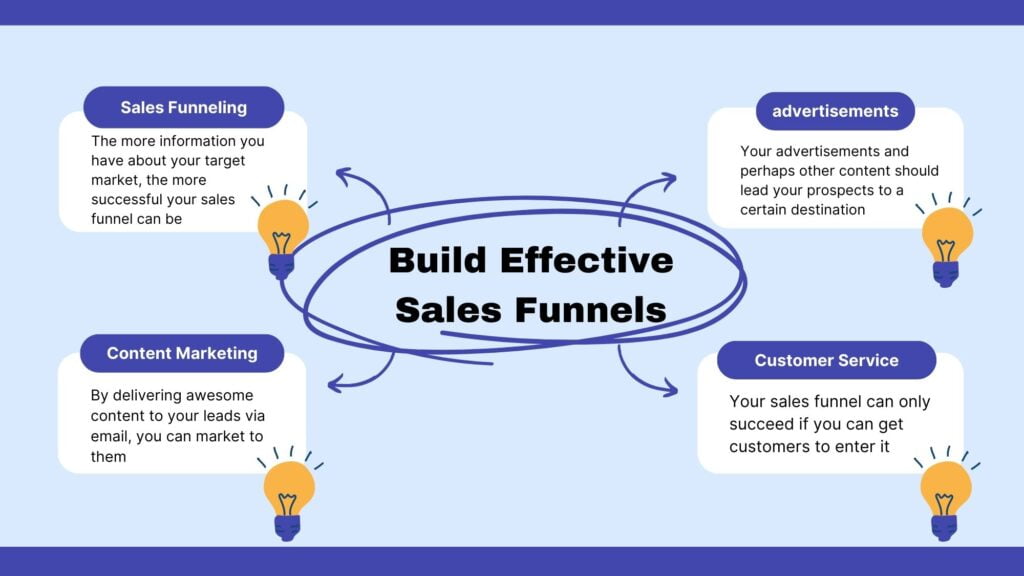Each phase of the sales funnel has an effect on customer behaviour. You must have a thorough understanding of them. Knowing each move allows you to use strategies to increase the number of individuals progressing from one to the next. This has the potential to have a huge impact on your market.
What do you mean by a Sales Funnel?
The sales funnel is the series of steps that someone would go through in addition to becoming a client of yours. Let’s take a peek at a traditional distribution funnel. People at the very top of the sales funnel pass by your business. The next stage of the funnel is where a small number of them plan to walk in.
A customer notices a sale rack of items. He or she clicks through the shelf, and they’ve reached the funnel’s next stage. The customer then chooses four items and proceeds to the checkout. They’ve reached the end of the process. If everything goes according to plan, they complete the transaction and reach the rocky ground of the funnel. Every company, in one way or another, goes through the same process. Your sales funnel should include any marketing platform. And it’s possible that the funnel is dispersed through several networks.
Importance of Sales Funnel
The direction that prospects follow is depicted in our sales funnel. Understanding the funnel will assist you in identifying the funnel’s gaps — the points where prospects abandon the funnel and just never convert.
You can’t maximize your sales funnel if you don’t quite get it. We’ll go over the details of how the funnel operates later, but for now, know that you have control over how people progress through the funnel and whether or not they convert into clients.
How does it work?
Although there are many phrases used to characterize the various phases of the sales funnel, we’ll use the four most common terms to illustrate how every stage operates as a customer progresses from a guest to a prospect to a lead to a consumer.
A visitor arrives at your site via a Google search or a social media reference. He or she is also a potential client. The visitor can search your marketing materials or read several blog posts. You give him or her the opportunity to join your email list at any time.
When you approach leads with exclusive discounts, updates about new blog articles, or other enticing messages, they are more likely to return to your website. Perhaps you should provide a discount code.
When customers progress into the sales funnel, it gets narrower. This is partly due to the fact that there will be more customers at the top of the funnel than consumers at the bottom, but it is also due to the fact that the advertising will need to become more focused.
Since you don’t want to deliver the opposite signal at the wrong time, each stage takes a different strategy from you, the marketing company. It’s like a diner wondering what dessert you like before you’ve ordered your appetizer.
Steps to build an effective sales funnel
- The more information you have about your target market, the more successful your sales funnel can be. You’re not out to sell to anyone. You’re reaching out to people who are a good match for what you have to do. These user experience reviews assist you with keeping track of web usage and determining how users interact with the website.
- Your sales funnel can only succeed if you can get customers to enter it. This entails getting the material in front of the right people. Take the natural path to publish a lot of material on both of your sites. Use infographics, animations, and other forms of content to expand the content. Run a few advertisements if you’re able to pay more money. Where you can run such advertisements is determined by where your target crowd frequents. LinkedIn advertising could be the best option if you’re selling B2B.
- Your advertisements and perhaps other content should lead your prospects to a certain destination. In an ideal world, you’d send them to a landing page with an irresistible bid. Concentrate on capturing leads rather than pressing the deal because these people are already at the bottom of the sales funnel. The aim of a landing page is to direct the user to the next move. You’ll just want a call to action that shows them just what they need to do, whether it was to read a free article or view a tutorial.
- By delivering awesome content to your leads via email, you can market to them. Do so on a daily basis, but not too much. It should be enough to send one or two emails a week. Prepare the market for selling by training them first. What is it that they want to learn? What challenges and objections must you resolve in order to get them to purchase? Create a fantastic deal at the conclusion of the drip campaign. That is the content that will motivate the prospects to take action.
- You wouldn’t want to overlook your current clients. Instead, keep reaching out. Appreciate them for their orders, have extra discount codes, and invite them to follow you via social media.
Conclusion
It takes time to construct and optimize a sales funnel. It’s a lot of effort. However, in a tough industry, it is the only way to succeed. Believe it or not, even a minor aspect like font preference may have an effect on conversions. And if you ask customers to buy from you too much, they will leave.


